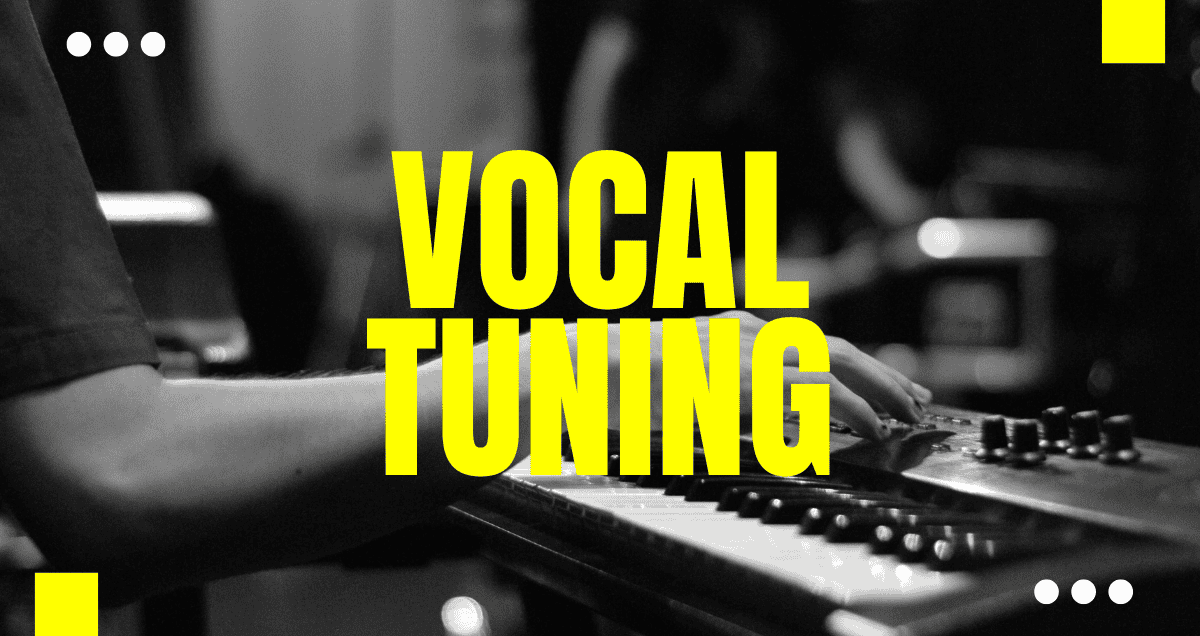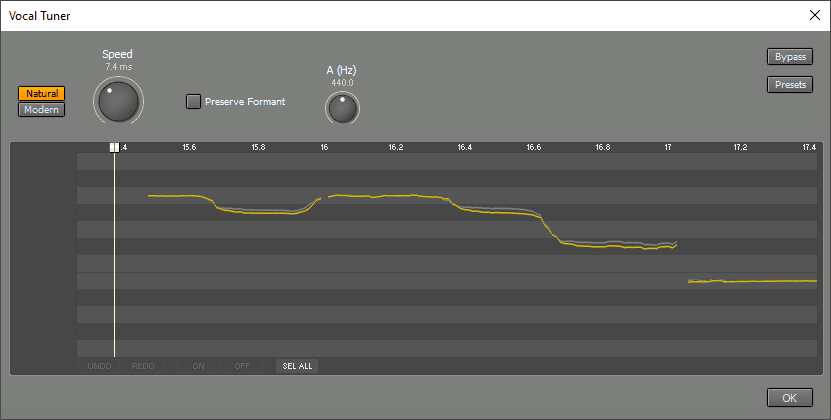Welcome to the world of vocal tuning! In this beginner-friendly guide, we’ll show you how to improve your singing using simple techniques. Whether you’re a beginner or an experienced vocalist, these tips will help you make your vocals shine.
Let’s make your vocals shine together! Ready to get started?
Table of Contents
ToggleWhat is Vocal Tuning?
Vocal tuning is the process of adjusting a singer’s pitch to match the music. It is a common practice in the music industry to make vocals sound polished and professional. While it usually aims to be subtle, vocal tuning can also be used creatively for special effects.
In today’s music world, vocal tuning is not just for fixing mistakes – it’s an artistic tool that can greatly shape the sound of a song when used properly.
Introduction to Vocal Production and Pitch Correction
Whether you’re recording in a studio or at home, vocal production is important for making great music. It means recording, editing, and mixing vocals so they sound their best. Vocals are often the emotional center of a song, so they need to be perfect. Even the best singers can have small pitch problems, and pitch correction helps fix these issues to improve the vocal tracks.
Pitch correction is a way to fix and improve the pitch of singing and instruments in music. It became popular in the late 20th century and is now a common tool in music production. Pitch correction isn’t just for fixing mistakes; it can also create interesting sounds and effects in a vocal performance.
Pitch correction can do many things, from small fixes to making a voice sound robotic. How you use it is up to you. Nathan James Larsen shows this in a video using Revoice Pro 4.
Whether you’re new to vocal production or want to get better, understanding pitch correction is important. In the next sections, we’ll explain how vocal pitch works, show techniques for pitch correction, and give tips for using tools like RePitch Standard or Revoice Pro 5 to improve your vocal production.
How Pitch Correction Software Works
Pitch correction software is an essential tool in music production, helping to create polished and professional vocal tracks. But how does it work?
Pitch correction software analyzes the pitch of a vocal track, identifies the closest musical notes, and adjusts the pitch to match those notes perfectly. It uses complex algorithms to change the pitch without affecting other aspects of the voice, like its tone or length. This “magic” allows the software to fine-tune a human voice without making it sound fake or overly processed.
Here are the main steps:
- Pitch Detection: The software looks at the audio and finds the pitch. It figures out the frequency of the sound at every moment.
- Pitch Mapping: The software matches the detected pitches to a musical scale based on the song’s key. It finds the right notes that the performance should hit.
- Pitch Shifting: The software changes the original audio to match the correct notes. It does this by speeding up or slowing down the vibrations of the sound, like tightening or loosening a string on an instrument.
Advanced pitch correction software like RePitch and Revoice Pro has extra features, like timing correction and formant control. Timing correction keeps vocals in sync with the rhythm, and formant control keeps the natural vocal sound even when the pitch is changed a lot.
Knowing how pitch correction software works is important for using it well. It can fix off-pitch vocals, but its real power is in making a good performance sound even better.
Fixing Singing: How to Use Pitch Correction
Pitch correction can help make singing sound better. But you have to use it the right way. Let’s see how to do that.
- Manual Pitch Correction: This gives you lots of control. You fix just the wrong notes, not everything. It’s good for small fixes when most of the singing is okay, but there are a few bad notes. It keeps the singer’s natural sound.
- Automatic Pitch Correction: Here, the software fixes all the singing based on a set scale and key. It’s helpful for big fixes or when most of the singing is off. But be careful! Using this too much can make the singing sound fake.
- Formant Correction: Sometimes, fixing the pitch can change the singer’s special voice sound. Formant correction keeps the voice natural, even with big pitch changes. This is handy for making big changes in pitch or adding harmonies.
- Creating Harmonies: Pitch correction software can also make harmony from one singing track. You copy the track and change the pitch of the copies. This makes a harmonized sound. It’s good for making the singing sound richer or for when you don’t have another singer for backup.
Different methods have their strengths. A good producer uses a mix of these methods based on what the vocal track needs. Next, we’ll show you step-by-step how to use pitch correction software well, so the singing sounds natural.
Knowing some music basics is important for using pitch correction correctly. This helps keep the song sounding good while fixing the singing. We’ll focus on a few important music ideas that relate to fixing singing: scales, keys, intervals, and harmony.
Easy Guide to Fixing Singing with Pitch Correction
Fixing singing with pitch correction can be tricky. Here’s how to do it step by step:
- Start with Good Singing: Good singing is key. Pitch correction can help, but it can’t replace a strong, emotional performance.
- Listen to the Singing: Before you start, listen to the singing a few times. Figure out which parts need fixing and how bad the mistakes are.
- Pick the Right Method: Choose the best way to fix the singing. If only a few notes are off, try manual correction. If big parts need fixing, use automatic correction.
- Fix the Pitch Slowly: Make small changes at a time. Fix the worst mistakes first, then fine-tune as needed.
- Keep the Singer’s Sound: Don’t change the singer’s unique voice. Use formant correction if your software has it to keep the singing natural.
- Listen and Adjust: After fixing, listen to the singing with the music. Make sure it fits well with everything else.
- Trust Your Ears: Pay attention to how the singing sounds, not just what you see on the screen.
Remember, the goal is to make the singing better, not perfect. So use these tools wisely, and remember, sometimes, less is more.
Wrap Up
Congratulations on learning the basics of vocal tuning! With these newfound skills, you’re well on your way to enhancing your singing and making your vocals stand out.
Keep practicing and experimenting with different techniques to continue improving your vocal performance!




